Digital Camera World Verdict
The DJI RSC 2 has pretty much everything you could ask for, including a clever folding design for easy storage and a ‘briefcase’ shooting mode, an OLED display so that you don’t have to adjust everything with its companion smartphone app, new Titan stabilisation algorithms, a 3kg payload that can handle mirrorless cameras and DSLRs, even with quite big lenses, and a 14-hour battery life. Even balancing the camera is made easy (well, as easy as it can be). It doesn’t work with every camera, though.
Pros
- +
OLED display/settings controls
- +
Excellent app with more options
- +
Useful pano mode for stills, too!
Cons
- -
Some cameras not supported
- -
Quite a learning curve for novices
- -
You might need a second handle
Why you can trust Digital Camera World
A gimbal like the DJI RSC 2 does things that in-camera or in-lens stabilisers can’t. In-body stabilisation is fine for smoothing out ‘jitters’ in static handheld shots, but it doesn’t really deal with fast or erratic camera movements.
This is why pro videographers use gimbals. They can smooth out panning movements, track subjects independently, smooth out run and gun (or even walk and gun) footage and even carry out programmed movements smoothly.
If you’re just getting started with gimbal based video, the DJI RSC 2 is a great choice. It’s designed to offer professional level results, it can handle the kind of cameras used by enthusiast and pro photographers, and it has the controls and the expandability for quite advanced filmmaking techniques.
At the same time, it’s priced quite competitively for those just dipping their toes in video, as it costs little more than a good carbon fibre tripod and head. It does have a pretty steep learning, curve, however – but that’s just gimbals in general.
Specifications
Pan axis range: 360° continuous rotation
Roll axis range: -240° to +95°
Tilt axis range: -112° to +214°
Battery life: 14 hours
Charging time: 2 hours (with fast charging)
Weight: 1.2kg
Payload: 3kg
Key features
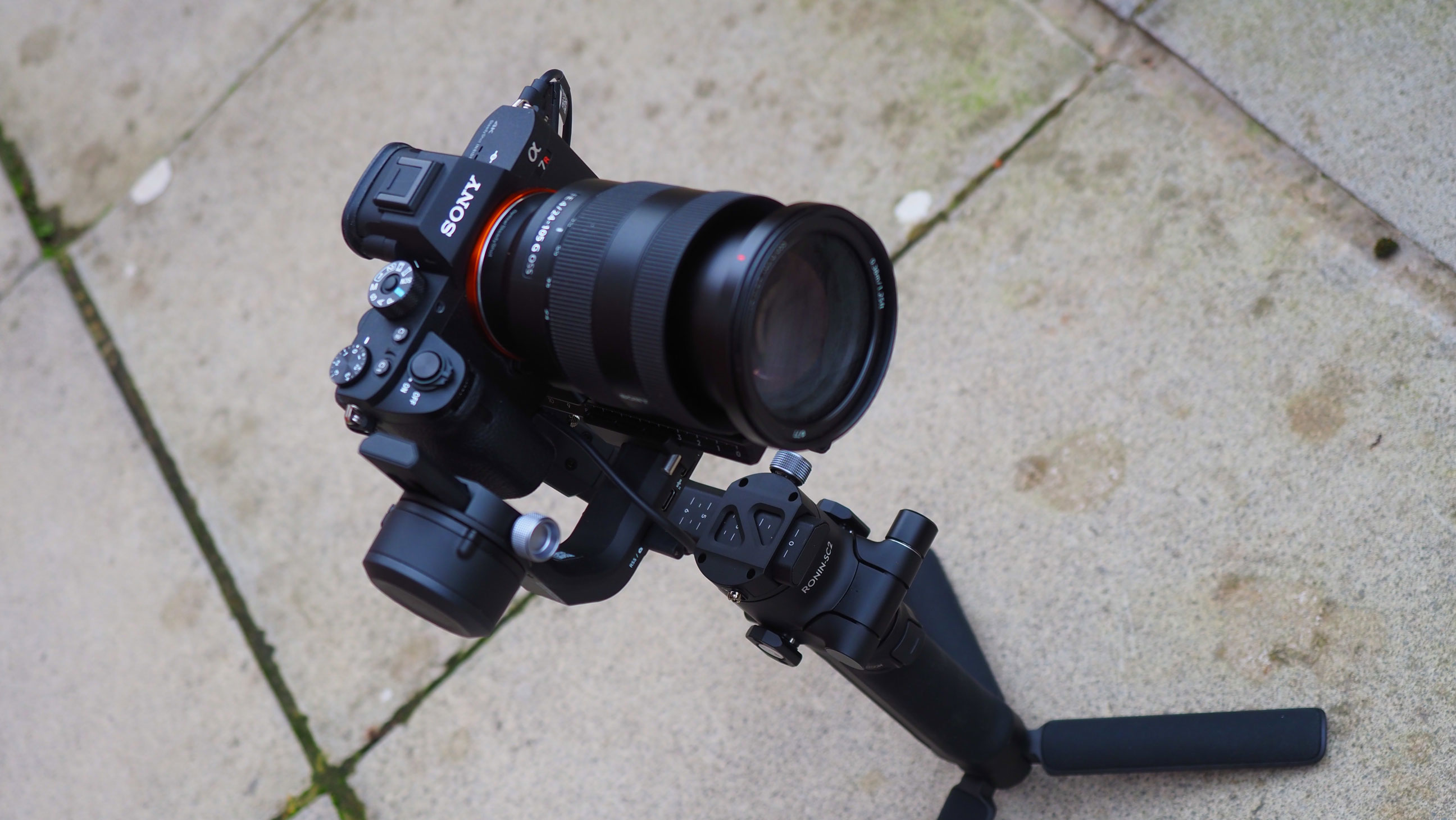

One of the key features of the DJI RSC 2 is its folding design. This means it packs away into a smaller space and is easier to carry around as a result. It also offers more handling configurations, including a ‘briefcase’ mode where the camera is lower than a regular ‘flashlight’ mode and is handy for low-angle tracking shots.
Gimbals typically rely on a companion smartphone app for additional settings and adjustments as there’s not a whole lot of space for controls on the handle. The RSC 2 does, however, have a 1-inch OLED screen and a menu control wheel for accessing many of the settings directly.
The best camera deals, reviews, product advice, and unmissable photography news, direct to your inbox!
Strictly speaking, you can use any camera with this gimbal, but if you want to be able to start and stop recording with the button on the gimbal handle (much better than trying to press the button on the camera), you’ll need to connect it with the supplied cable. This works with most but not all cameras, so you might want to check the DJI camera compatibility guide first. Canon, Sony, Panasonic, Nikon and Fujifilm are supported pretty well, but Olympus users are left out in the cold somewhat.
Other features include a quick one-button switch to vertical shooting mode for social media videos, a new Titan stabilization algorithm and an optional RavenEye image transmission module which can send live 1080 video to your smartphone at a range of up to 200m – and offers gimbal and camera control from your phone at the same time.
Build and handling
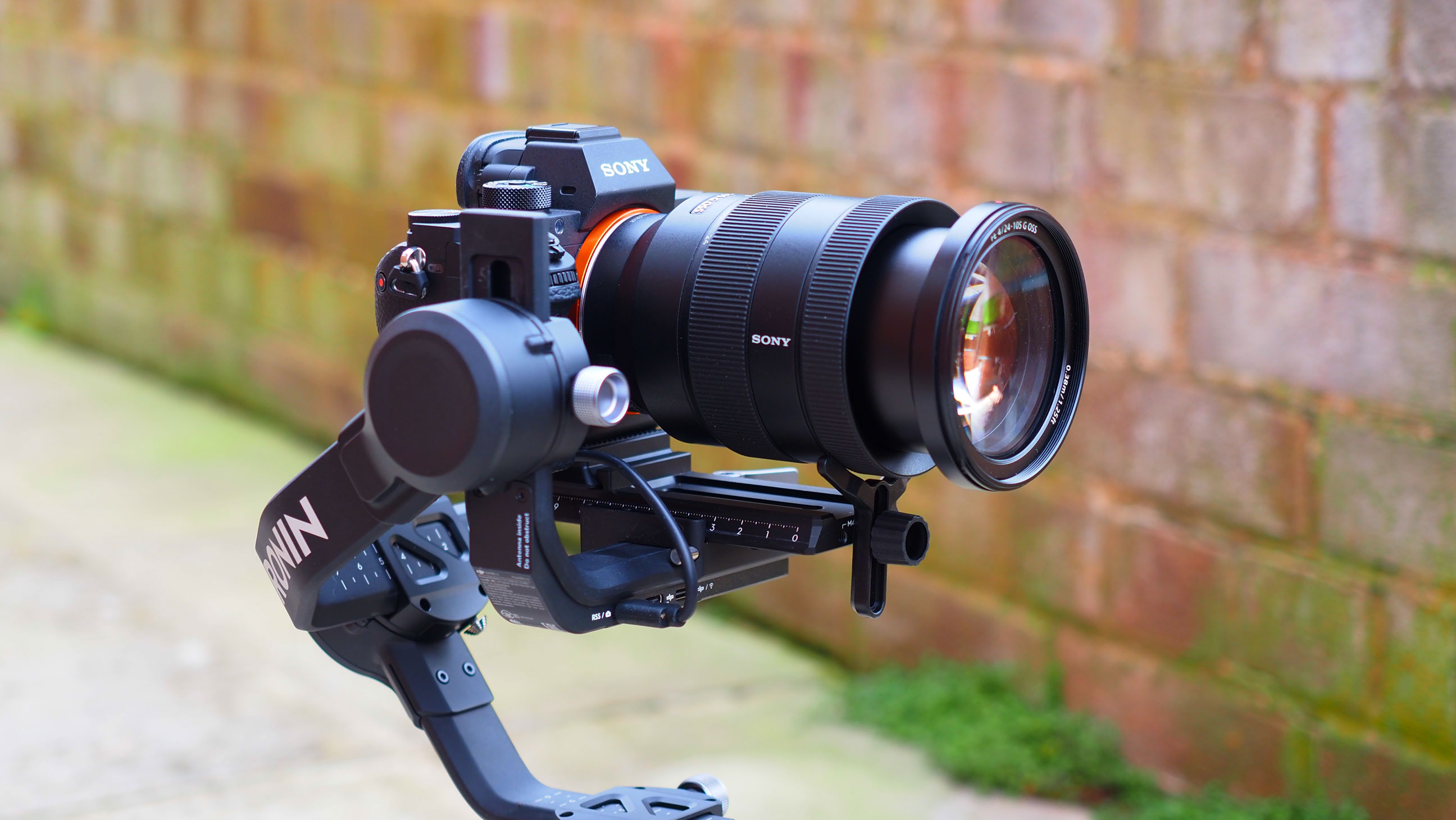
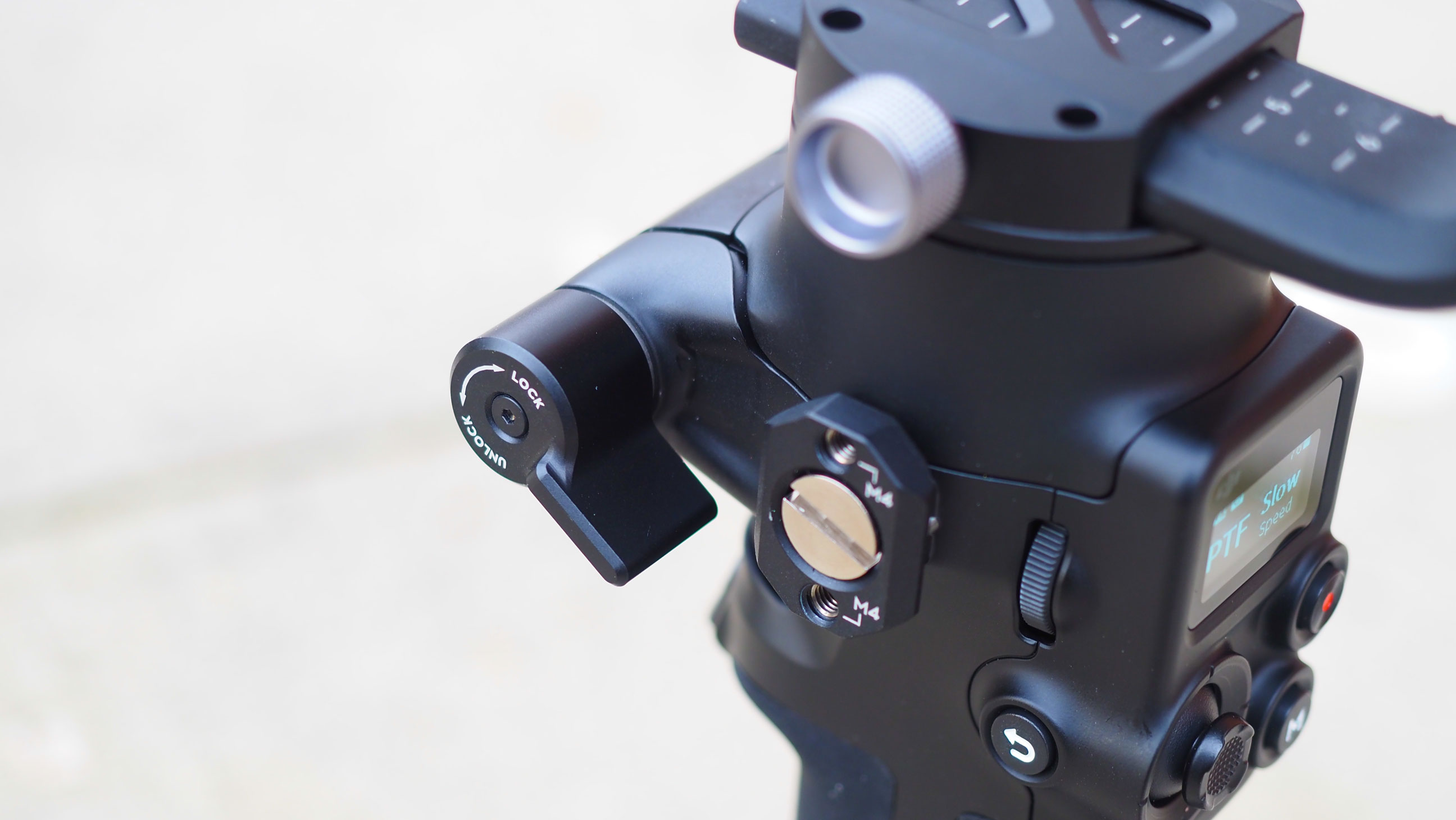
The DJI RSC 2 feels really well made and substantial, and once you’ve got it properly balanced it feels easily capable of handling a full frame DSLR or mirrorless camera and a substantial constant-aperture standard zoom.
The balancing process itself is made easier by individual axis locks, and easier than the cheaper Ronin SC, which uses the same sliding plate for both tilt axis adjustments and can be fiddly to set up.
The folding hinge above the handle feels similarly robust – almost too robust, in fact, as it takes a bit of effort to twist – our sample was brand new, so maybe this will become easier with time. This folding pivot does allow a greater range of operational modes – and the ‘briefcase’ mode is especially good for low-level shooting.

But while the RSC 2 might handle a 3kg payload, this is pretty heavy for a one-handed gimbal. You can use the tripod handle extension for a two-handed grip, but if your camera is anywhere near this gimbal’s upper limit, you may want a side handle or a two-handle grip.
There is a more expensive Combo version which includes the RavenEye image transmitter, a metal (not plastic) tripod grip, a phone holder, a focus motor attachment and a nicer fitted case, but no extra handle.
A few cameras offer electronic focus control with the control wheel on the front of the grip; otherwise you’ll need DJI’s manual focus motor attachment, sold separately or included in the Combo kit.
Performance
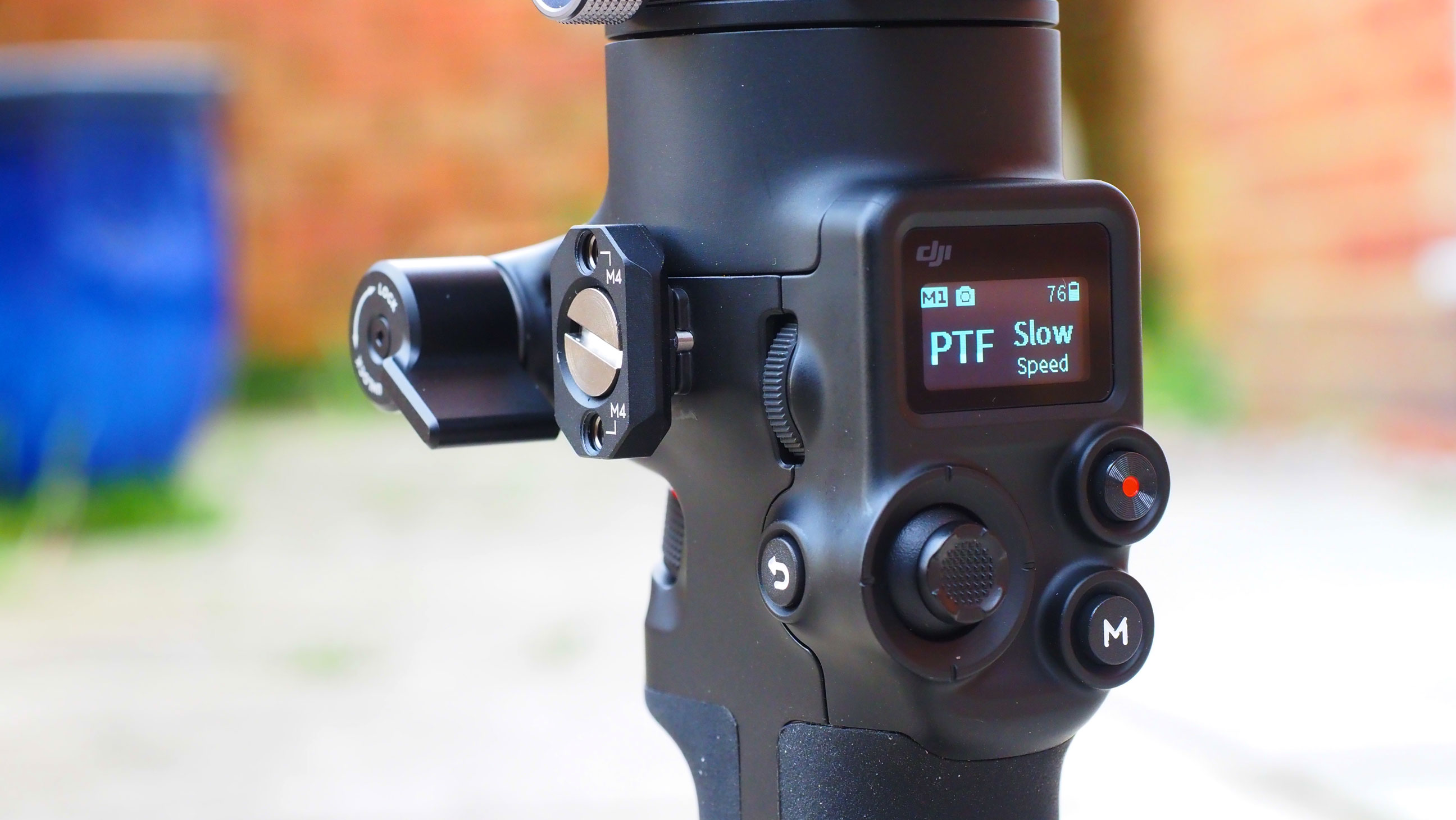
A gimbal is only as good as its operator in the end, but with DJI’s new Titan image stabilisation system, the DJI RSC 2 can produce super-smooth footage even in the hands of amateurs, with only a hint of wobble with run and gun filming (you need to perfect that special gimbal ‘crouch’ as you walk).
The joystick gives you quite smooth pan/tilt movements, but the Force Mobile mode is just uncanny. With this you tilt and turn your phone to control the gimbal, and when you’ve tuned the settings carefully you can create very smooth movements – and you can restrict it to just pan or just a tilt movement too.
The ActiveTrack system is clever, using your phone and the DJI app to track a subject (you’ll need the phone mount so that the phone is pointing where your camera is), though it can lose contact with your subject if your movement is too fast or another object gets in the way. The ActiveTrack 3.0 option does use the view through the camera lens, but you need the RavenEye attachment to transmit this to your phone.
Verdict
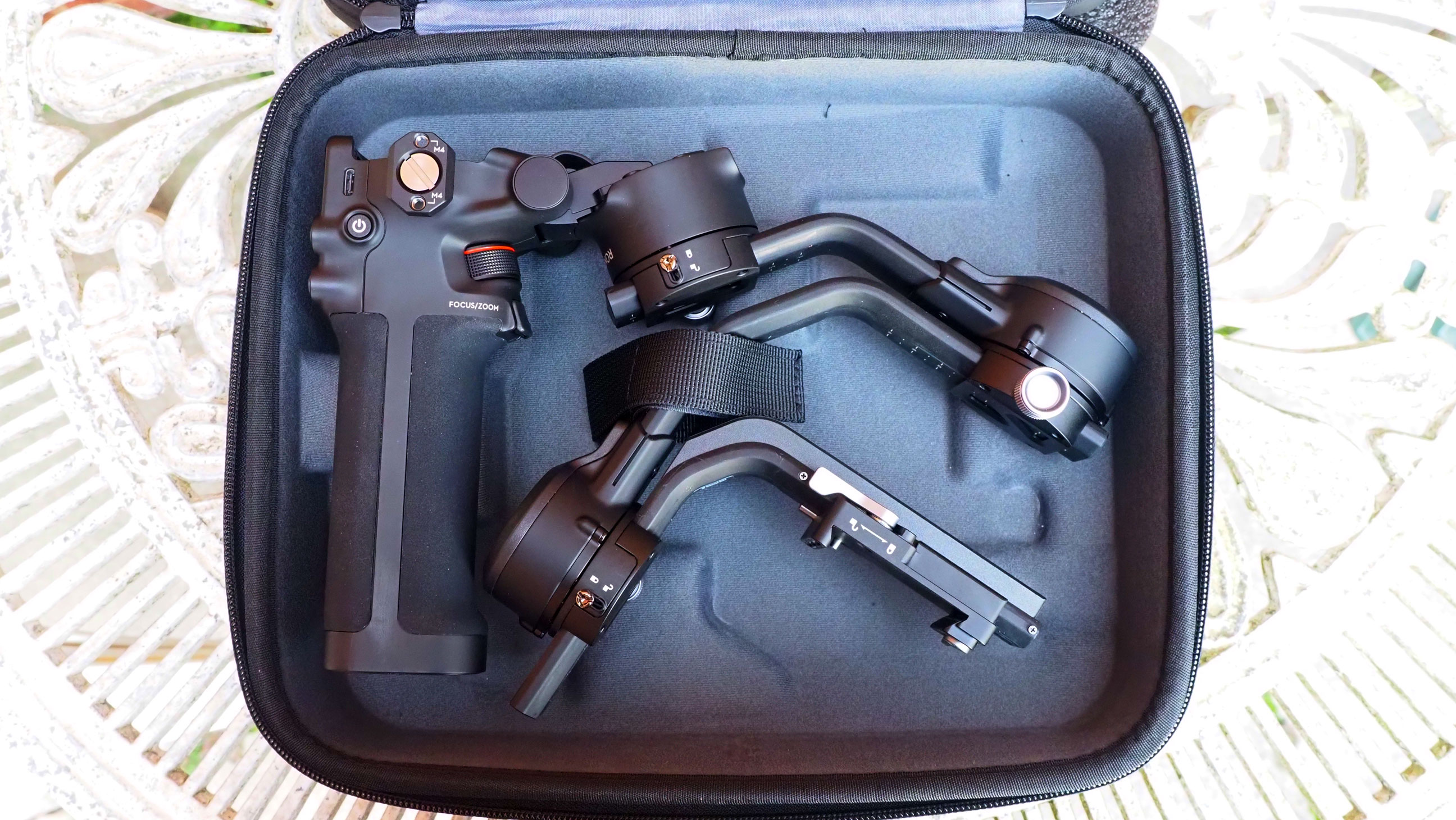
If the DJI RSC 2 was a camera, you’d say it was for enthusiasts with professional aspirations. It’s cheap enough to appeal to beginners, and good enough for professional use. New users might find its multitude of options, accessories and settings quite daunting, but once you’ve learned your way around this gimbal it will be a long time before you exhaust its potential. It’s also a great replacement for a Ronin SC, with more versatility and a bigger payload, so if you love your RC but it’s wearing out, the RSC 2 is the obvious replacement.
Read more:
• Best gimbals for DSLRs and mirrorless cameras
• DJI Ronin SC review
• Zhiyun Crane 2S review
• Best video tripods

Rod is an independent photography journalist and editor, and a long-standing Digital Camera World contributor, having previously worked as DCW's Group Reviews editor. Before that he has been technique editor on N-Photo, Head of Testing for the photography division and Camera Channel editor on TechRadar, as well as contributing to many other publications. He has been writing about photography technique, photo editing and digital cameras since they first appeared, and before that began his career writing about film photography. He has used and reviewed practically every interchangeable lens camera launched in the past 20 years, from entry-level DSLRs to medium format cameras, together with lenses, tripods, gimbals, light meters, camera bags and more. Rod has his own camera gear blog at fotovolo.com but also writes about photo-editing applications and techniques at lifeafterphotoshop.com

